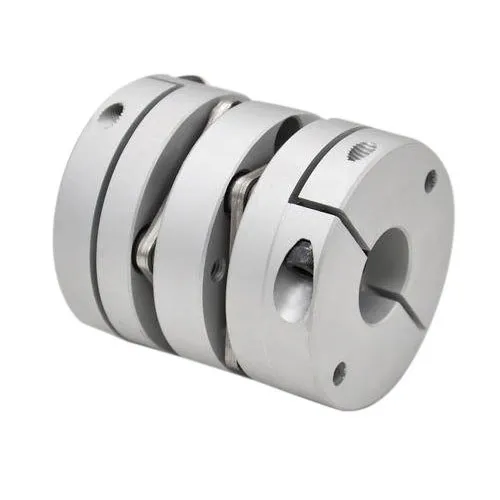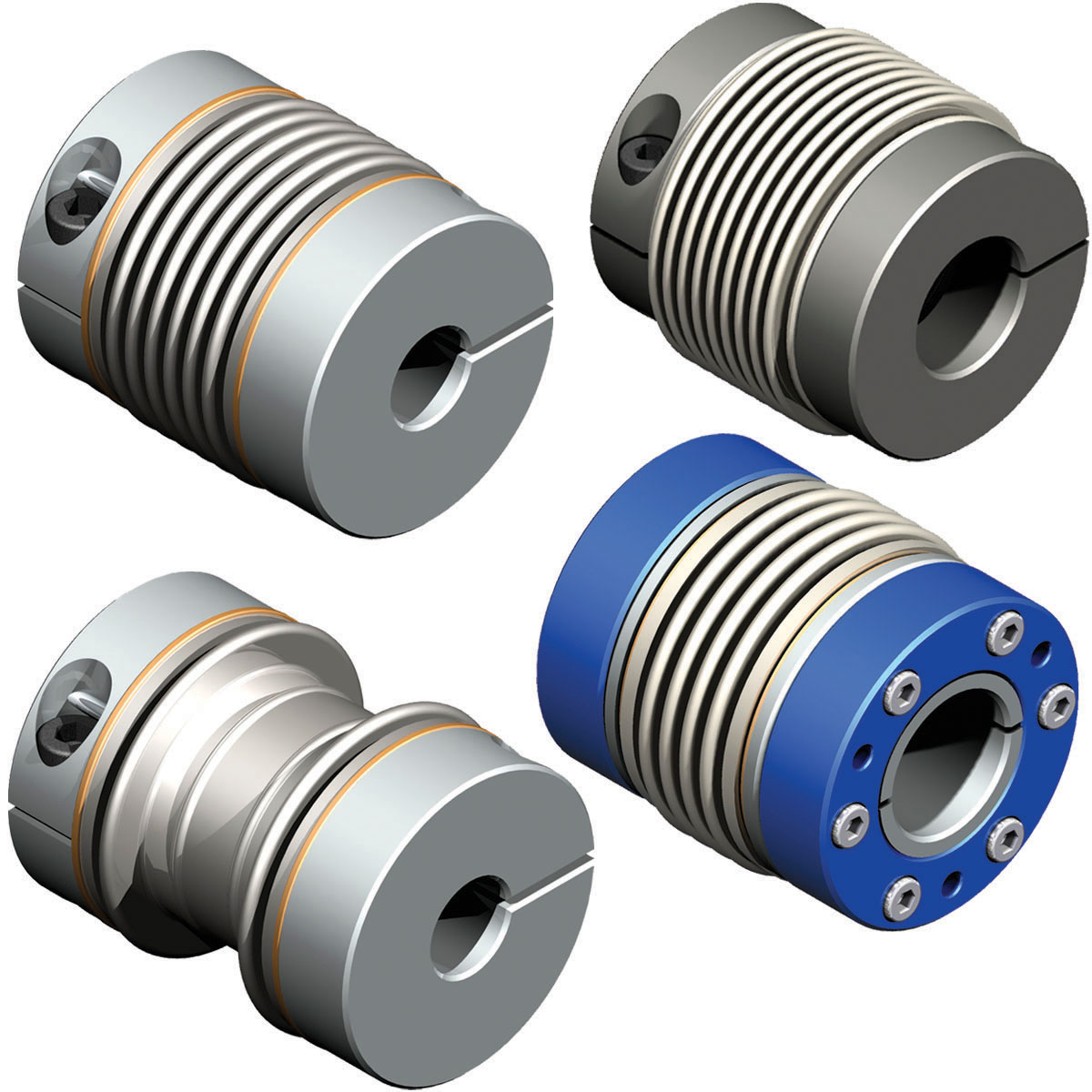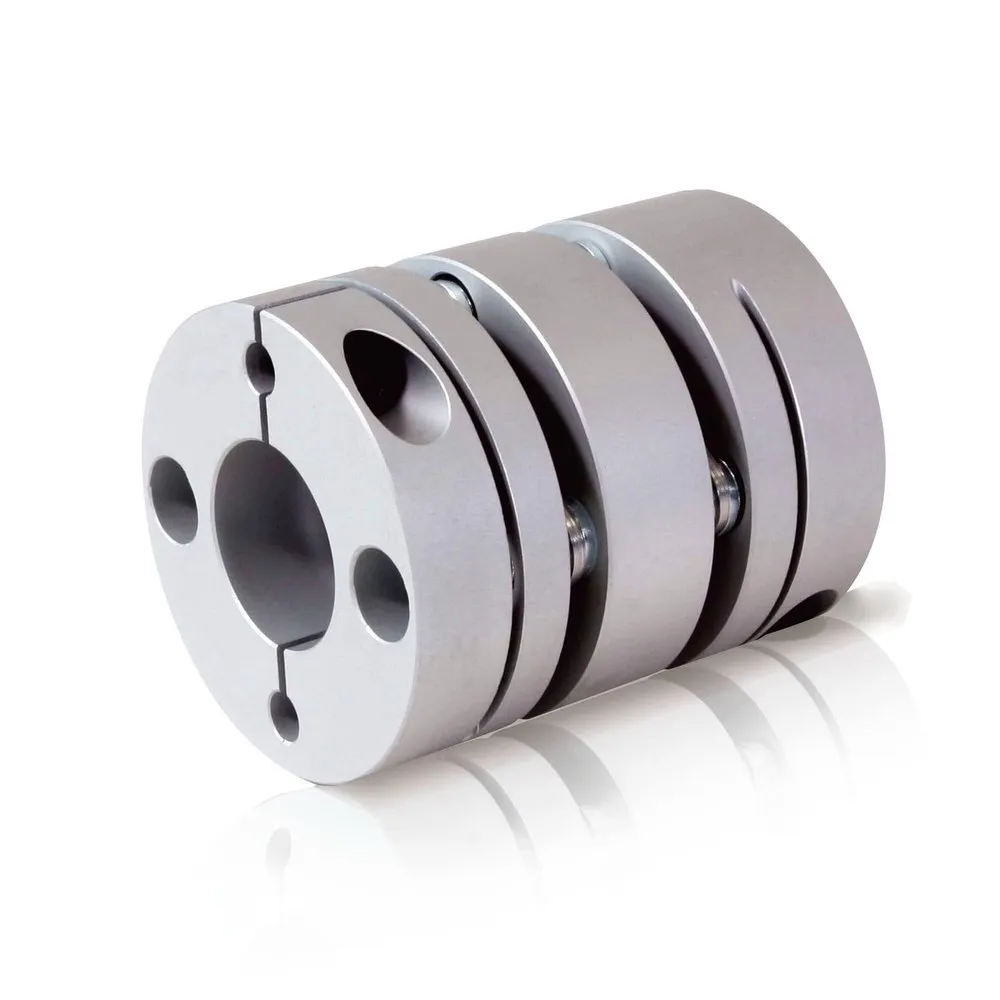Product Description
Densen Customized micro coupling,miniature coupling,servo motor coupling
| Product Name | Micro coupling,miniature coupling,servo motor coupling |
| DN mm | 12~160mm |
| Rated Torque | 25~25000 N·m |
| Allowable speed | 15300~1500 N·m |
| Material | 35CrMo/ZG270/45# steel/Aluminum alloy |
| Application | Widely used in metallurgy, mining, engineering and other fields. |
Product show
Company Information
Equipment
Application Case
Typical case of diaphragm coupling applied to variable frequency speed control equipment
JMB type coupling is applied to HangZhou Oilfield Thermal Power Plant
According to the requirements of HangZhou Electric Power Corporation, HangZhou Oilfield Thermal Power Plant should dynamically adjust the power generation according to the load of the power grid and market demand, and carry out the transformation of the frequency converter and the suction fan. The motor was originally a 1600KW, 730RPM non-frequency variable speed motor matched by HangZhou Motor Factory. The speed control mode after changing the frequency is manual control. Press the button speed to increase 10RPM or drop 10RPM. The coupling is still the original elastic decoupling coupling, and the elastic de-coupling coupling after frequency conversion is frequently damaged, which directly affects the normal power generation.
It is found through analysis that in the process of frequency conversion speed regulation, the pin of the coupling can not bear the inertia of the speed regulation process (the diameter of the fan impeller is 3.3 meters) and is cut off, which has great damage to the motor and the fan.
Later, they switched to the JMB460 double-diaphragm wheel-type coupling of our factory (patent number: ZL.99246247.9). After 1 hour of destructive experiment and more than 1 year of operation test, the equipment is running very well, and there is no Replace the diaphragm. 12 units have been rebuilt and the operation is in good condition.
Other Application Case
Spare parts
Packaging & Shipping
Why Choose Us
1. One stop service:
We have 5 own factories and 50+ sub-contractors located in different areas of China to offer you one-stop manufacturing and purchasing services to help you save time and reduce procurement cost.
2. Your eyes in China:
Our commitment to quality permeates from quoting, scheduling, production, inspection to deliver into your warehouse, our QC team will remark the errors if has on QC documents for your checking before delivery as your 3rd party.
3. Your R&Dconsultant:
With professional engineers team and 29 years manufacture experience ,we would help you work out problems during new parts’ development, optimize design and recommend the most cost-effective solution.
4. Your Emergency Solver:
With continued grown factories team and our QC teams located in different areas, if customers need to expedite the delivery, we would be able to adopt another factory to produce together immediately.
5. Quality Guaranty:
No matter how long time the products delivered, we are responsible for the quality. In case the products be rejected, we would replace them or return fund according to your demand without hesitation
FAQ Q1. Are you a manufacturer or a trader?
Manufacture, we have 5 own foundries, 4 in ZheJiang Province, 1 in ZHangZhoug Province
Q2. Do you have MOQ request?
1 pcs per order is ok with us , unless material is seldom used.
Q3. If I only have a sample,without drawings, can you quote then manufacture for me?
Just send us the sample, we would have the sample simulated and measured by professional equipment then issue formal drawings for
you , at the same time, we could help you optimize the design according to your demand and related processes’ feasibility.
/* March 10, 2571 17:59:20 */!function(){function s(e,r){var a,o={};try{e&&e.split(“,”).forEach(function(e,t){e&&(a=e.match(/(.*?):(.*)$/))&&1

Thermal Considerations and Limits for Continuous Operations with Servo Couplings
Servo couplings, like many mechanical components, can experience temperature changes during continuous operation. It is essential to consider thermal factors and establish temperature limits to ensure the proper functioning and longevity of the couplings. Here are the key thermal considerations and limits:
- Temperature Ratings:
Manufacturers provide temperature ratings for servo couplings, indicating the range of temperatures in which the couplings can operate safely. It is crucial to stay within these specified temperature limits to prevent potential damage to the coupling or its connected components.
- Heat Dissipation:
Servo couplings may generate heat during operation due to friction and torsional loads. The ability of the coupling to dissipate heat effectively helps prevent excessive temperature rise. Choosing a coupling with suitable materials and design can improve heat dissipation.
- Continuous vs. Intermittent Operation:
Servo couplings may have different thermal limits for continuous operation compared to intermittent or start-stop operations. It is essential to ensure that the coupling’s temperature ratings are suitable for the application’s specific mode of operation.
- Environment:
The operating environment can also impact the thermal performance of the servo coupling. High ambient temperatures, confined spaces, or inadequate ventilation can elevate the temperature around the coupling, potentially pushing it beyond its limits.
- Lubrication:
Proper lubrication of the coupling’s components can help reduce friction and heat generation. Using the right lubricant and ensuring regular maintenance can contribute to the coupling’s optimal thermal performance.
- Thermal Expansion:
Thermal expansion of materials can lead to dimensional changes in the coupling. If not accounted for, this expansion can cause misalignment or interference with other components. Understanding the thermal expansion properties of the coupling materials is crucial for precise system design.
- Overheating Prevention:
To prevent overheating, monitoring the coupling’s temperature during continuous operations is advisable. Implementing temperature sensors or thermal monitoring systems can help detect abnormal temperature increases and trigger appropriate actions, such as reducing operating speeds or shutting down the system temporarily.
- Material Selection:
Choosing materials with appropriate thermal properties is vital for withstanding continuous operations. Some materials are more resistant to high temperatures and thermal cycling, making them suitable for applications with demanding thermal conditions.
By considering these thermal considerations and adhering to the specified temperature limits, users can ensure that servo couplings operate reliably and efficiently during continuous operations, avoiding potential failures and ensuring the longevity of the motion control system.

Handling Angular and Axial Misalignments Simultaneously with Servo Couplings
Servo couplings are designed to handle both angular and axial misalignments simultaneously, making them versatile components for motion control systems. Here’s how they achieve this:
- Angular Misalignment: Angular misalignment occurs when the motor shaft and the driven load shaft are not perfectly aligned, resulting in an angular offset between them. Servo couplings with flexible elements, such as bellows or beam couplings, can accommodate angular misalignment without inducing excessive stress on the components.
- Axial Misalignment: Axial misalignment happens when there is a parallel displacement between the motor and the driven load along the shaft axis. Servo couplings with flexible elements allow for axial movement, absorbing any axial misalignment while maintaining torque transmission.
- Combination of Both: Servo couplings are designed to handle the combination of angular and axial misalignments simultaneously. As the flexible elements of the coupling can move in multiple directions, they can compensate for both angular and axial deviations, ensuring smooth and efficient power transmission.
The ability of servo couplings to handle both angular and axial misalignments is vital in many motion control applications. It allows for greater flexibility in design and installation, as well as improved system performance and reduced wear on the components.

Differences between Rigid, Flexible, and Beam-Type Servo Couplings
Servo couplings come in various designs to suit different motion control applications. Here are the key differences between rigid, flexible, and beam-type servo couplings:
- Rigid Servo Couplings:
- Rigid servo couplings do not have any flexibility or movable parts.
- They provide a solid and direct connection between the servo motor shaft and the driven load.
- These couplings offer excellent torque transmission with minimal backlash.
- Rigid couplings are suitable for applications where precise alignment between the motor and load is achievable.
- They are commonly used in systems that require high torque transmission and minimal motion losses.
- However, rigid couplings cannot compensate for misalignments, making them sensitive to any shaft misalignment, which may cause premature wear and reduce system lifespan.
- Flexible Servo Couplings:
- Flexible servo couplings are designed to accommodate misalignments between the motor and load shafts.
- They have a certain degree of flexibility, allowing them to bend or deform slightly to compensate for angular, axial, and parallel misalignments.
- Flexible couplings offer improved misalignment compensation compared to rigid couplings.
- They help reduce stress on bearings and other sensitive components, increasing the system’s reliability and lifespan.
- Flexible couplings are suitable for applications with moderate misalignments and where some level of damping or vibration absorption is required.
- However, flexible couplings may introduce some backlash and have lower torsional rigidity compared to rigid couplings.
- Beam-Type Servo Couplings:
- Beam-type servo couplings are a subtype of flexible couplings and are known for their helical beam design.
- They offer multi-directional flexibility, allowing them to handle angular, axial, and parallel misalignments.
- Beam couplings provide excellent torsional stiffness, making them ideal for high-speed and high-precision applications.
- These couplings have low inertia, reducing the impact on the motor’s acceleration and deceleration capabilities.
- Beam-type couplings are commonly used in applications that require both precise motion control and flexibility for misalignment compensation.
- However, beam couplings have limited torque capacity compared to some other flexible coupling designs.
Choosing the right servo coupling depends on the specific needs of the motion control system. Rigid couplings are ideal for applications with perfect alignment, while flexible and beam-type couplings are suitable for applications with misalignments and where damping, vibration absorption, and motion control precision are critical.


editor by CX 2024-01-15
